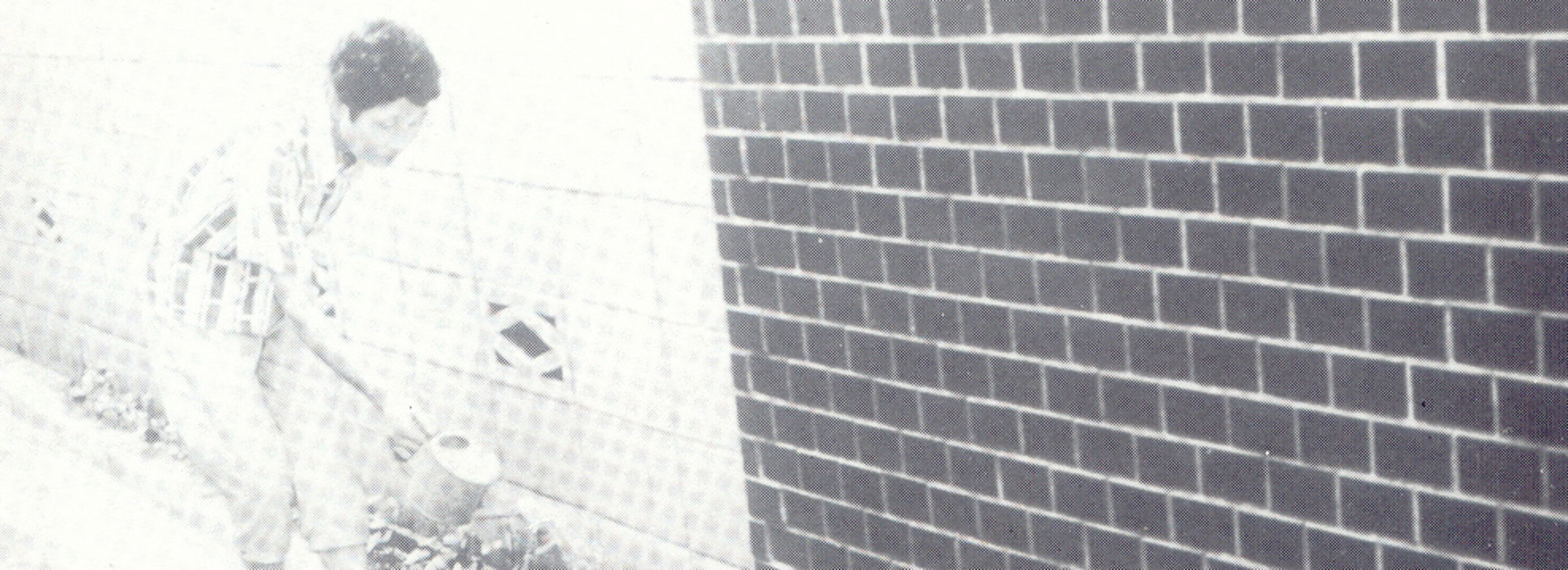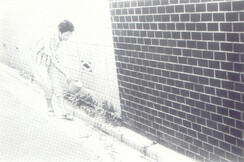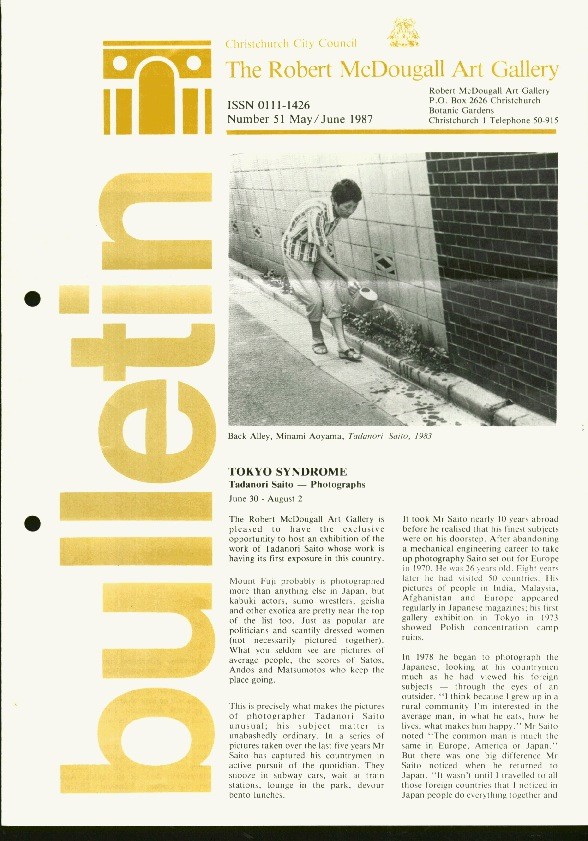This exhibition is now closed
Tokyo Syndrome: Tadanori Saito - Photographs
30 June –
2 August 1987

Poster for the Tokyo Syndrome: Tadanori Saito - Photographs exhibition (detail)
The Robert McDougall Art Gallery is pleased to have the exclusive opportunity to host an exhibition of the work of Tadanori Saito whose work is having its first exposure in this country.
Mount Fuji probably is photographed more than anything else in Japan, but kabuki actors, sumo wrestlers, geisha and other exotica are pretty near the top of the list too. Just as popular are politicians and scantily dressed women (not necessarily pictured together). What you seldom see are pictures of average people, the scores of Satos, Andos and Matsumotos who keep the place going.
This is precisely what makes the pictures of photographer Tadanori Saito unusual; his subject matter is unabashedly ordinary. In a series of pictures taken over the last five years Mr Saito has captured his countrymen in active pursuit of the quotidian. They snooze in subway cars, wait at train stations, lounge in the park, devour bento lunches.
It took Mr Saito nearly 10 years abroad before he realised that his finest subjects were on his doorstep. After abandoning a mechanical engineering career to take up photography Saito set out for Europe in 1970. He was 26 years old. Eight years later he had visited 50 countries. His pictures of people in India, Malaysia, Afghanistan and Europe appeared regularly in Japanese magazines; his first gallery exhibition in Tokyo in 1973 showed Polish concentration camp ruins.
In 1978 he began to photograph the Japanese, looking at his countrymen much as he had viewed his foreign subjects – through the eyes of an outsider. "I think because I grew up in a rural community I'm interested in the average man, in what he eats, how he lives, what makes him happy." Mr Saito noted "The common man is much the same in Europe, America or Japan." But there was one big difference Mr Saito noticed when he returned to Japan. "It wasn't until I travelled to all those foreign countries that I noticed in Japan people do everything together and they don't mind it. They enjoy being in crowds, but people from other countries don't."
Shortage of space is a prime reason for Japan's crowds (note the image of vast tangle of bicycles beside a train station) and the photographs show how the average Japanese adapts from childhood to old age. One charming image shows an old man seated cross legged on the ground his two travelling cases and shoes set neatly beside him as he awaits his train: another shows a man enjoying a sleep curled into a small ball as he waits.
Mr Saito's pictures also reflect the problem of how to spend leisure time. Many of the subjects are either working or sleeping. "Japanese men don't know how to enjoy their spare time. To work so hard does not always bring happiness," he adds.
Tokyo Syndrome has been exhibited in Japan and Switzerland before coming to Christchurch.
('Tokyo Syndrome: Tadanori Saito – Photographs', Bulletin, No.51, May/June 1987, pp.1-2)
Location:
Robert McDougall Art Gallery - main gallery
Exhibition number: 386


